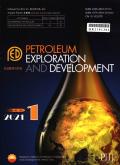Episodic thrusting and sequence-sedimentary responses and their petroleum geological significance in Kuqa foreland basin, NW China
IF 8
Q1 ENERGY & FUELS
引用次数: 0
Abstract
This study integrates field outcrop profiles, drilling cores, 2D seismic profiles, and 3D seismic data of key areas to analyze the Triassic tectonic-sequence stratigraphy in the Kuqa foreland basin, and investigates the impact of episodic thrust structures on sedimentary evolution and source rock distribution. (1) The Kuqa foreland basin has experienced stages of initial strong, weakened activities, relaxation and inactivity of episodic thrusting, resulting in the identification of 4 second-order sequences (Ehebulake Formation, Karamay Formation, Huangshanjie Formation, Taliqike Formation) and 11 third-order sequences (SQ1–SQ11) in the Triassic strata. Each sequence or secondary sequence displays a “coarse at the bottom and fine at the top” pattern due to the influence of secondary episodic thrust activity. (2) The episodic thrusting is closely linked to regional sequence patterns, deposition and source rock formation and distribution. The sedimentary evolution in the Triassic progresses from fan delta to braided river delta, lake, braided river delta, and meandering river delta, corresponding to the initial strong to the inactivity stages of episodic thrusting. The development stage of thick, coarse-grained sandy conglomerate reservoirs aligns with the strong to weakened thrust activities, while the source rock formation period coincides with the relaxation to inactivity stages. (3) Controlled by the intensity and stages of episodic thrust activity, the nearly EW trending thrust fault significantly thickened the footwall source rock during the Huangshanjie Formation, becoming the development center of Triassic source rock, and experienced multiple overthrust nappes in the soft stratum of the source rock, showing “stacked style” distribution. (4) The deep layers of the Kuqa foreland basin have the foundation and conditions necessary for the formation of substantial gas reservoirs, capable of forming various types of reservoirs such as self-generating and self-storing lithology, lower generating and upper storing fault block-lithology, and stratigraphic unconformity. This area holds significant importance for future gas exploration efforts aimed at enhancing reserves and production capabilities.
库车前陆盆地幕式逆冲和层序-沉积反应及其油气地质意义
综合野外露头剖面、钻井岩心、二维地震剖面和重点地区三维地震资料,对库车前陆盆地三叠系构造层序地层学进行了分析,探讨了幕式逆冲构造对沉积演化和烃源岩分布的影响。(1)库车前陆盆地经历了初期强、减弱活动、松弛和不活动的阶段,形成了三叠系地层中4个二级层序(鄂赫布拉克组、克拉玛依组、黄山街组、塔里奇克组)和11个三级层序(sq1 ~ sq11)。受次级幕式逆冲活动的影响,各层序或次级层序呈现“下粗上细”的格局。(2)幕式逆冲作用与区域层序格局、沉积和烃源岩形成分布密切相关。三叠纪沉积演化经历了从扇三角洲到辫状河三角洲、湖泊、辫状河三角洲、曲流河三角洲的演化过程,对应于幕式逆冲作用的初始强烈到不活跃阶段。粗粒厚砂砾岩储层发育阶段与逆冲活动的强—弱阶段一致,烃源岩形成阶段与逆冲活动的松弛—不活动阶段一致。(3)受幕式逆冲活动强度和阶段控制,近东西向逆冲断裂在黄山街组下盘烃源岩明显增厚,成为三叠系烃源岩发育中心,在烃源岩软地层中经历多次逆冲推覆,呈“叠置式”分布。(4)库车前陆盆地深层具有大量气藏形成的基础和条件,能够形成自生自储岩性、下生上储断块岩性、地层不整合等多种类型的气藏。该地区对未来旨在提高储量和生产能力的天然气勘探工作具有重要意义。
本文章由计算机程序翻译,如有差异,请以英文原文为准。
求助全文
约1分钟内获得全文
求助全文

 求助内容:
求助内容: 应助结果提醒方式:
应助结果提醒方式:


